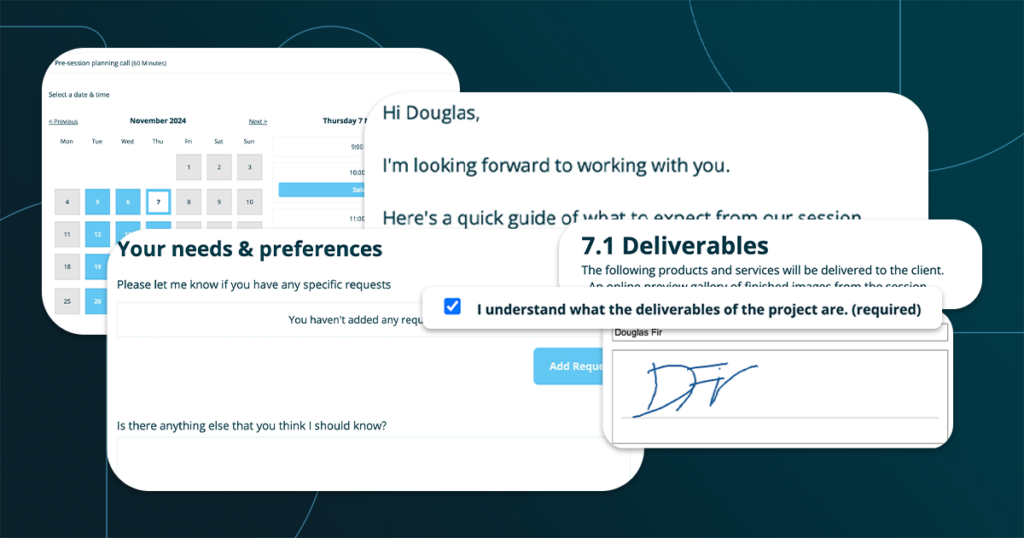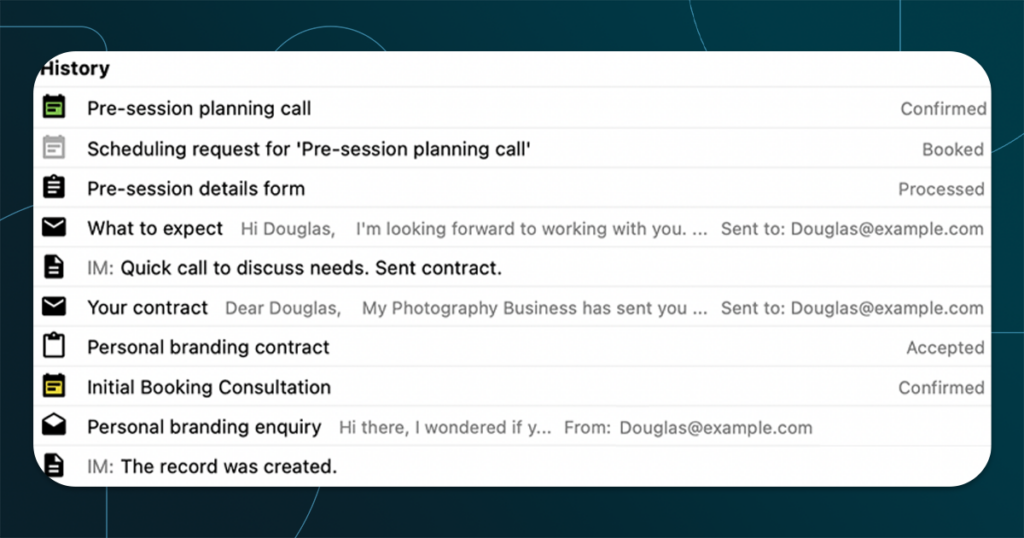How to deal with difficult clients

No matter how well you plan to only work with your ideal photography clients, you’ll likely face situations that are less than ideal.
Step forward The Difficult Client.
Maybe you know the type: they want more than they’ve paid for; they want an extra discount on your already-great deal; they want you to reshoot the images even though you’ve stuck to the brief.
Whether it’s a personality clash or a case of unrealistic expectations, dealing with difficult clients can be demoralising, depressing and might even make a dent in your profits.
Read on to learn how to handle tricky situations while maintaining both your professional relationship and your reputation.
Aim To Understand Difficult Clients
Photography is unavoidably client-facing. Which means you can’t avoid the possibility of a person who simply cannot be pleased.
But there are ways to mitigate the potential fall-out, starting with trying to understand what’s motivating their behaviour.

Kick off with looking beyond the emotion to identify the problem. What exactly are they not happy about? This could take time as photography is a highly personal process, as well as a financial investment.
Focus on empathy and perspective while putting yourself in their shoes.
A disappointed bride can’t rearrange her wedding to get any missed shots. A sleep-deprived new parent often can’t think straight to rationally explain their issue. Factor in their stress levels and do all you can to be the one who remains calm while their emotions run high.
And be honest. Is there something you could have done better for them? Did you stick to the brief? Have you quoted accurately? If you recognise a mistake, own it and apologise. If not, read on.
Use Effective Communication Strategies
For all clients, challenging or otherwise, clear and transparent communication is central to a successful relationship.
You can minimise the chances of an unhappy customer by putting the right systems in place throughout your business, such as a dedicated photography CRM.

At the start of each project, meet with them in person where possible to discuss their preferences, gather the info you need to create a watertight brief and establish clear expectations. Outline and share exactly how the shoot will work, what your fee covers and the precise products they’ll receive at the end. And, of course, ask them to sign a crystal-clear contract.
But even with these fundamentals in place, you might still end up facing disgruntlement.
Whether they’re asking for too much compared to what they’ve paid for or simply don’t like the images, how you communicate with them next is crucial.
Use active listening
Embracing the art of active listening is a wise strategy. Following these tips will help you to understand their concerns and address them proactively:
- Be fully present in the conversation, resisting distractions while stepping out of your own inner world and into theirs.
- Show interest via good eye contact, looking in their eyes for 50% to 70% of the time spent listening and holding the contact for four to five seconds before briefly looking away.
- Notice non-verbal cues like a rushed voice indicating anxiety and use your own, such as not folding your arms, leaning sightly towards them and nodding at appropriate points.
- Ask open-ended questions to encourage further responses, avoiding the dead-end of yes/no questions
- Paraphrase and reflect back what they’ve said to reassure them of your full attention.
- Listen to understand rather than to respond, aiming not to come up with solutions until the time is right.
- Withhold judgment and advice.
Focus on constructive problem-solving

Your aim is to resolve the conflict as soon as possible with minimum damage to the relationship, your reputation and your bottom line.
Reaching a mutually beneficial solution can be speeded up by:
- Agreeing the ultimate objective and outcome
- Establishing the facts and keeping assumptions separate
- Finding what you agree on to create some shared understanding
- Sharing possible solutions with an open mind
- Identifying the possible consequences if you can’t reach an agreement
- Maintain professionalism and boundaries
The boundaries of your agreement will have been set early on in the relationship via a contract. As these expectations have already been established and signed off, you can use them to politely justify why you’re standing your ground – provided you’ve done everything you’ve promised.
The power of confidence
When you confidently know your own work and your own business, this can help you to remain calm, composed and professional when dealing with difficult photography clients.
You can then combine this knowledge with some tips on how to manage your emotions:
- Breathe deeply in through your nose and out through your mouth
- Take a brief pause before speaking to carefully consider your next words
- Step away from the conversation to gather your thoughts
- Focus on the solidity of your feet on the floor
And always remember that one or two difficult clients don’t define you or your skills as a photographer. In the face of criticism, it’s natural to feel a little of the dreaded imposter syndrome.
But by keeping all your positive client relationships and successes forefront of mind, you’ll quieten that inner voice of doubt and realise the best course of action could be to simply cut ties.
Learning lessons
Learn from the experience and ask yourself questions like:
- Did I ignore any early warning signs?
- Did I make a genuine mistake that I can easily avoid in future?
- Could I make improvements to my online systems and/or communication style?
- Can I tighten up the wording of my contract?
- Can I finesse my marketing strategy to attract more of the right kind of clients?
Use a Specialist CRM for photographers
Potential misunderstandings can be minimised when you use a specialist photography CRM like Light Blue.

Each client interaction can be logged to create a record in case you need to share evidence of a conversation taking place. This gives vital context and reference info while the disagreement is ongoing.
And you can tap into functionality which tracks client preferences, allowing you to identify patterns and improve future interactions.
Seek Support and Guidance
Chatting to photographer friends and colleagues can help to give you perspective and support. They’ve likely faced a similar challenging situation and may have some nuggets of wisdom to share.
You may also choose to access guidance from a professional business mentor who specialises in the photography industry.

Hopefully, you’ll never come across The Difficult Client and won’t have to use these tips. But if you do, remember to approach the situation with empathy, patience and professionalism.
Learn from the experience if it’s highlighted ways to finesses your business operations and then look forward to the next easy client that comes your way.
Related
- How to Manage Photography Client Expectations
- How To Attract Your Ideal Photography Clients
- Book more clients by phoning your leads - tips for making successful calls
- Using Sales Data to Drive Smart Upselling
- The Ultimate Guide to Selling Wedding Albums: Insights from Folio Albums and How Light Blue CRM Can Boost Your Sales
- How to Find a Consistent Photography Client Base
- How to Get More Word-of-Mouth Referrals
- How to Automate Time-Consuming Tasks
- The Photographers’ Guide to Finances and Budgeting
- How to Give an Exceptional Client Experience